A cherry blossom season is a time-honored event in Japan. It’s a long-standing tradition that brings marvel and wonder to every Japanese and tourist alike. These are one of the most beautiful flowers and appear throughout spring all over the country. Anyone taking a trip to Japan during this time would be remiss not to attend at least one hanami event.
Also known as Sakura, the Japanese cherry blossom is a symbol of the end of winter and the coming warmth of spring and summer. Locals and tourists alike flock to specific areas to catch a glimpse with friends and family and enjoy the beauty of this natural spectacle.
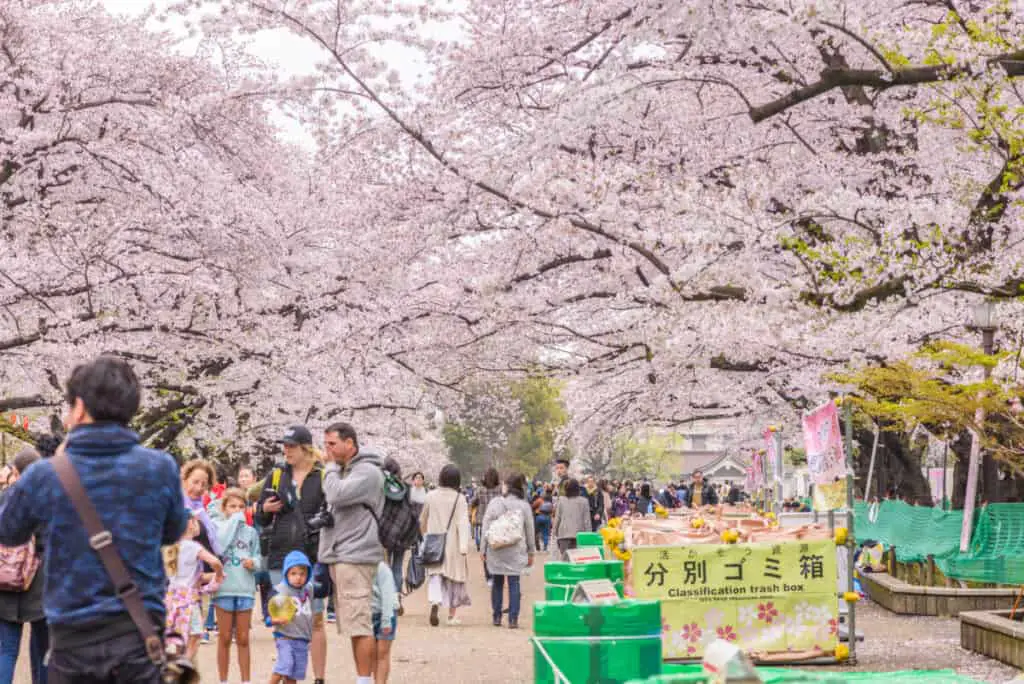
The Importance of Sakura
Millions of people every year visit Japan to see the blooming cherry trees in their full splay of beautiful pink hues, shades, and intensities. The sakura, to the Japanese, is a symbol of hope, spring, beauty, and new life. Sakura has a history of inspiring art and poetry as well as food and drink products across Japan.
Sakura Flavored Kit Kats Via Bokksu
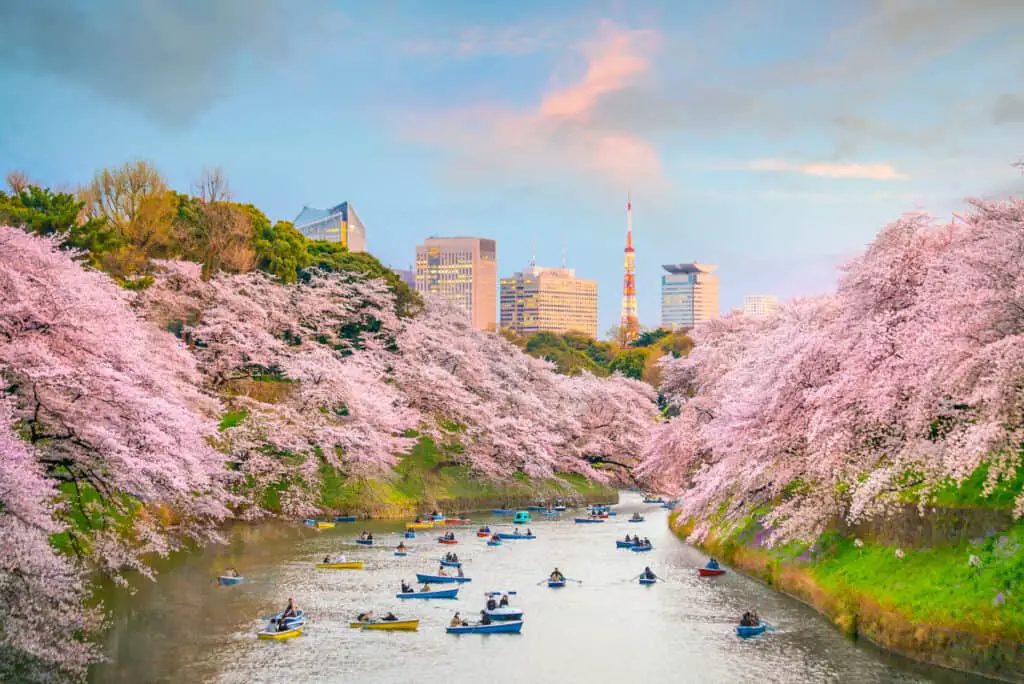
Hanami Parties
A Hanami party is essentially a flower-watching event across Japan when seeing the cherry trees in full bloom.
These can be as simple as a stroll through the park and viewing them from afar or having an official picnic under a sakura tree with friends, family, and even coworkers.
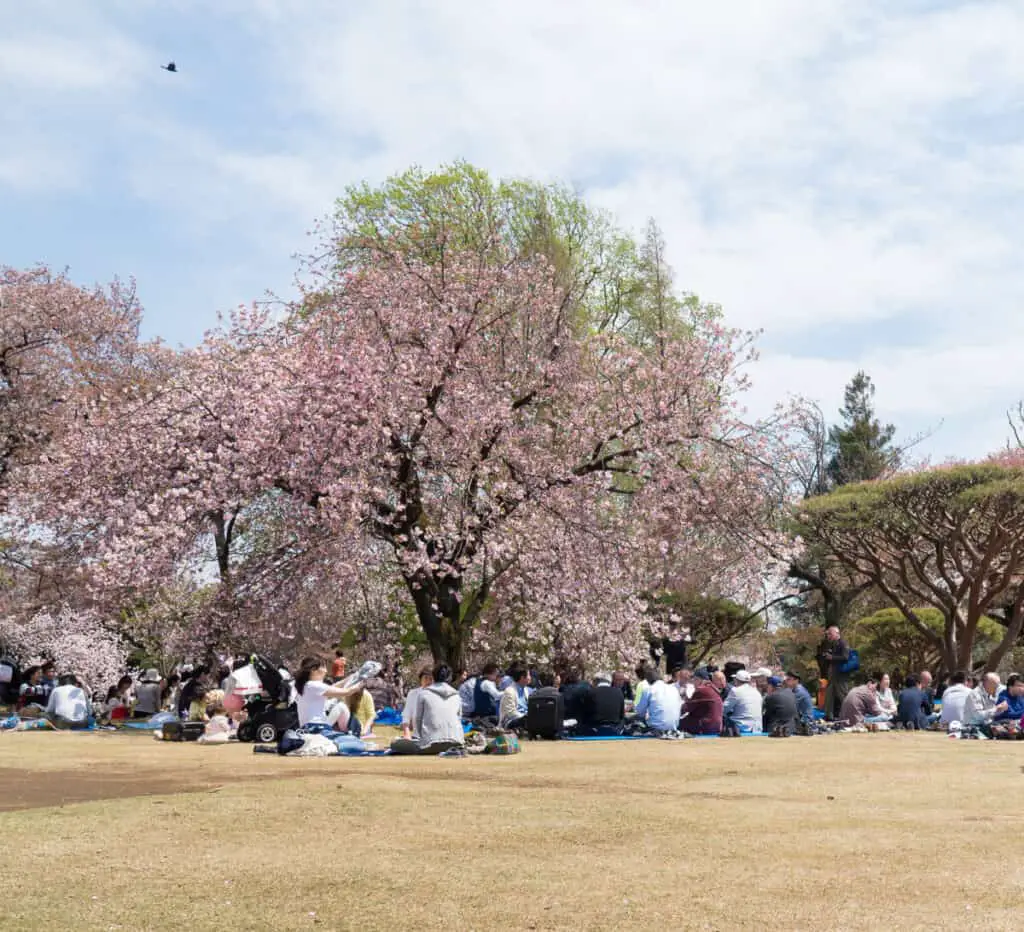
About Sakura Season in 2022
Japan experienced abundant rainfall throughout August and September of 2021. So, there are estimates that place the blooming season to begin early in 2022. However, the Japan Meteorological Agency hasn’t yet given its official forecast.
Japan Meteorological Agency Official Website
The blossoms begin showing themselves at the southern end of the country (Okinawa) and work their way northward to the region of Hokkaido.
Once the blooms appear, they only last for about two weeks on average. There are two general times for viewing cherry blossoms in Japan in the spring: early or later depending on latitude and specific region within the country.
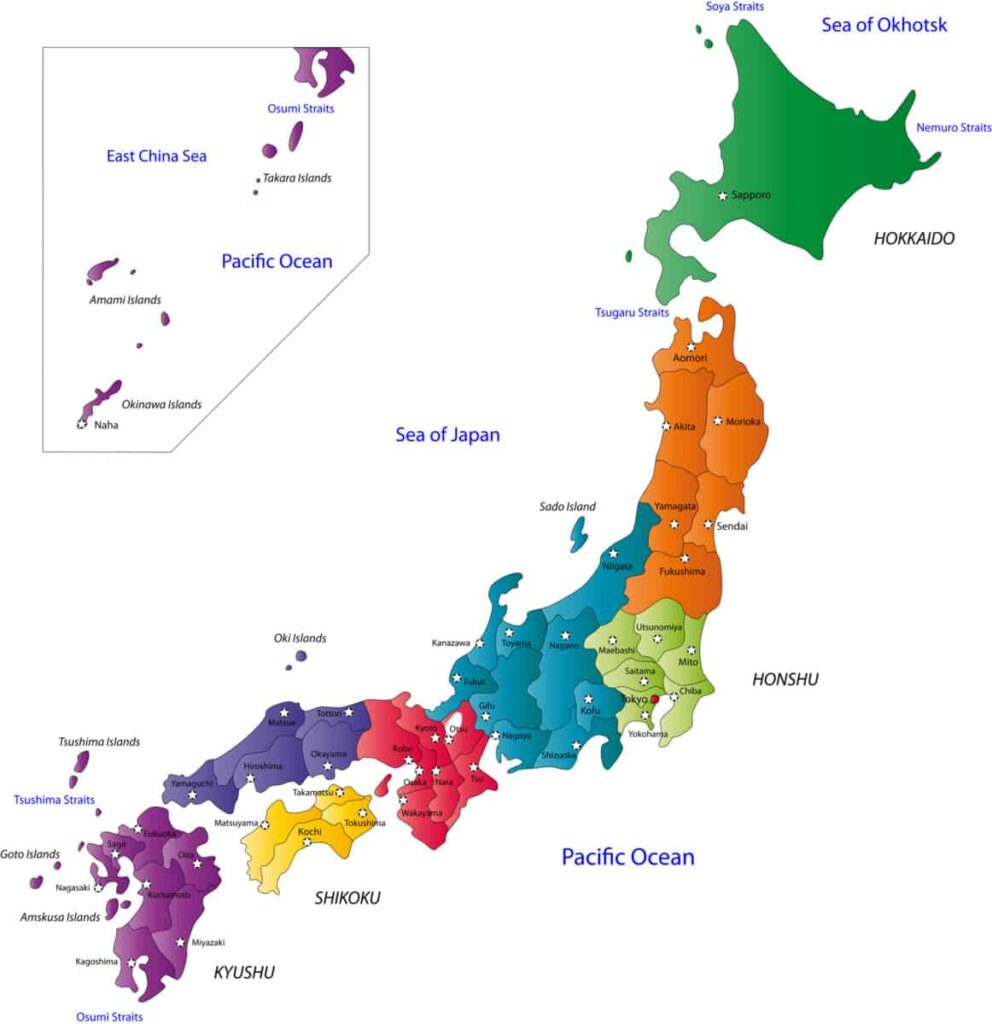
| Region | Earliest Estimated Bloom Date | Full Bloom Date Estimate |
| Okinawa | January 31 | February 6 |
| Fukuoka | March 12 | March 21 |
| Osaka | March 20 | March 29 |
| Kyoto | March 16 | March 27 |
| Nagoya | March 16 | March 27 |
| Tokyo | March 15 | March 21 |
| Kanazawa | March 22 | March 28 |
| Sendai | March 27 | March 30 |
| Hokkaido | April 23 | April 28 |
Early Blooms
The list below indicates the best places to see these trees early in the season, starting at the southernmost prefecture.
Okinawa
Mount Yae is a 453-meter landmark known for its beautiful cherry blossoms. They have the earliest blooming, beginning from mid to late January.
There are around 7,000 sakura trees lining a 3-mile road leading to the mountaintop.
Visit Okinawa Official Website
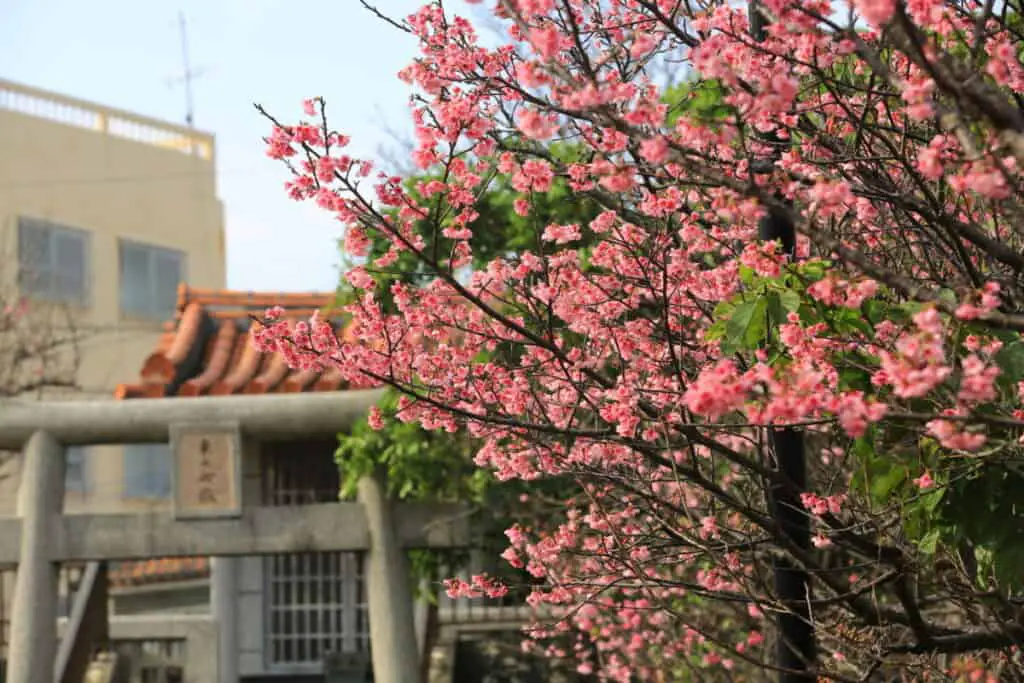
Oita
Famous for countless hot springs and onsen across the prefecture, Youra Peninsula is lesser-known but one of the largest viewing spots. There are more than 5,000 sakura trees and offer a stunning contrast against the oceanic scenery from early to late February.
Beppu City In Oita Prefecture Official Website
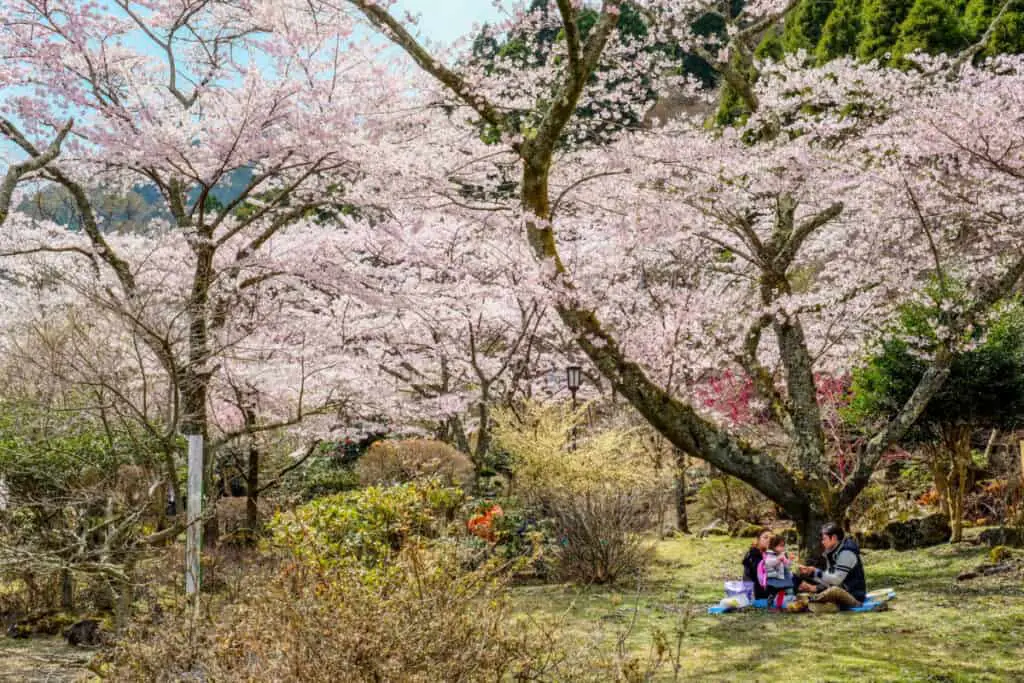
Shizuoka
Kawazu is the most famous spot for early viewing around the coast of the Izu peninsula. It’s a small city located in the southeastern part of the country. There are about 850 sakura trees that create a gorgeous and peaceful atmosphere.
Shizuoka Prefecture Official Website

Shimogamo Onsen is a hot spring on the southern end of the prefecture and their sakura festival dates back to the 16th century.
The Aono River lines with over 800 sakura trees that they also illuminate at nighttime. These come in from early February to the end of the month.
On the western side, there’s the Kawazu Cherry Blossom Festival from February 1st to the 28th. At night, the city illuminates the trees, which adds to the stunning natural display.
Kawazu Official Tourists Association Website
Kanagawa
Komatsugaike Park is a popular spot for viewing early sakura trees. Most ideal from mid to late February, there’s a row of trees from the train station to the park. Every year this area holds the Miura Kaigan Sakura Festival in honor of the beautiful blooms.
The Mount Matsuda Herb Garden in the western part offers beautiful cherry blossom viewing. It rests on a hillside in contrast to the snow-covered Mount Fuji. This area is best from mid-February through mid-March.
Kanagawa Official Tourism Website
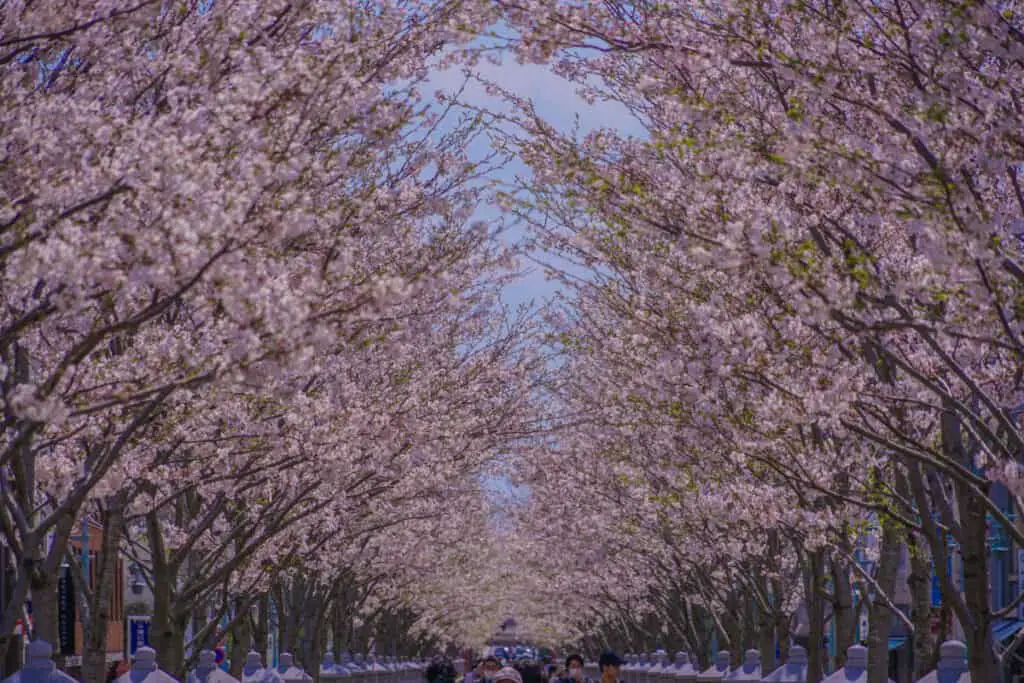
Kagoshima
From mid-February to late April, the Senganen is a marvelous spot for seeing sakura trees with a festival dating back to the 17th century. There are various types of cherry blossoms that allow visitors to enjoy them throughout the spring.
Kagoshima Official Tourism Website
Yamaguchi
In Kaminoseki, there’s a small peaceful town covering most of the southern part of the Murotsu Peninsula. The historical park features an expanse of cherry blossoms painting the hillsides. You can view these best from late February to mid-March.
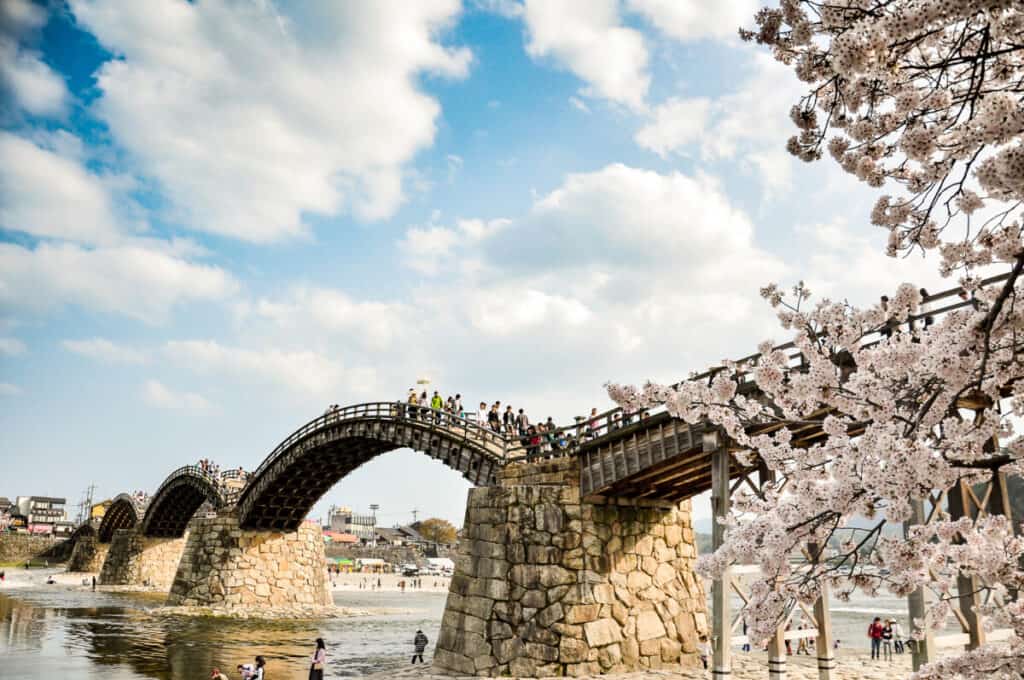
Chiba
The Sakuma Dam from mid-February through mid-April is an excellent time for seeing the cherry blossoms here. Located at the Boso peninsula, it features 2,000 sakura trees and two sakura festivals.
The first is from mid-February to mid-March and then again from mid-March to mid-April.
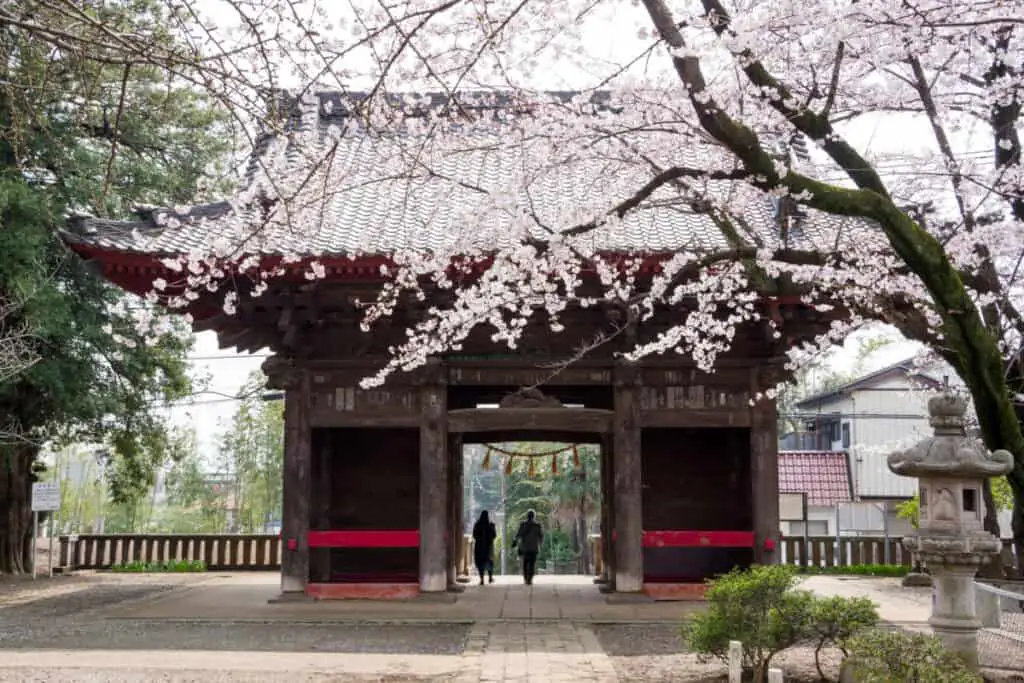
Hyogo
The Kansai area has the Kamigori Sakura Garden with amazing views of cherry trees. They have 10 different varieties and they all bloom at different times. Some come in mid-March while others won’t appear until late April depending on the specific variety of trees.
Sakura in Tokyo
Of course, Tokyo burgeons with plenty of mid-season spots. However, the ones listed here are the top five. Most are best between late March and early April.
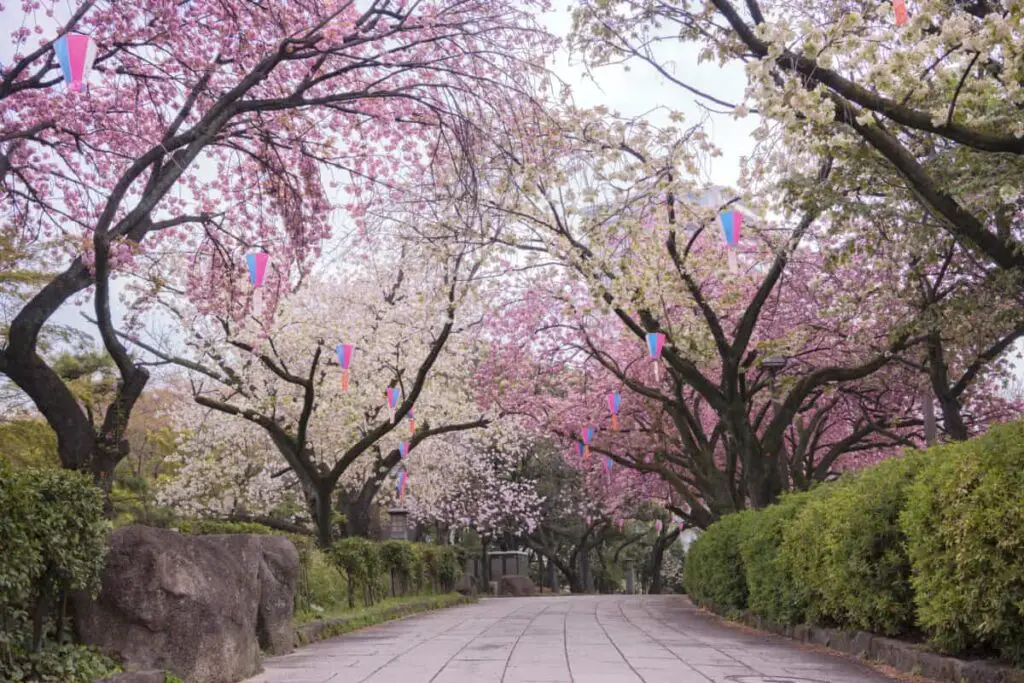
- Meguro River: 800 cherry trees that line the river bank; Nakameguro is the most popular area.
- Shinjuku Gyoen: 1,000 sakura trees of several varieties splay one of the largest national gardens of Japan, consuming 143 Acres.
- Chidorigafuchi: A quaint but picturesque area for viewing sakura blossoms.
- Ueno Onshi Park: The most crowded place for flower viewing in Tokyo because of their famous Hanami.
- Mid-Town: Best for seeing cherry blossoms at night.
Cherry Blossom Prime Locations And General Bloom Time
As you travel north in Japan, the cherry blossoms bloom a little later. This is because these areas aren’t as warm as the southern regions.
- Kyoto, Philosopher’s Path: From late March to early April, you can walk the path named after Nishida Kitaro, one of Japan’s most famed philosophers. He walked this path on his way to college and it’s one of the most famous for its Hanami.
- Himeji, Himeji Castle: Over a thousand sakura trees bloom on the grounds of this majestic, classic castle. The flowers appear from late March through mid April.
- Nara, Mount Yoshino: 30,000 cherry trees fill the mountainside throughout early April. It’s a sacred area known for its temples, shrines and Hanami parties.
- Fuji Five Lakes, Chureito Pagoda: One of the best views on Mount Fuji, it provides one of the most picturesque scenes of cherry blossoms from early to mid April.
- Nagano, Matsumoto Castle: This Japanese national treasure has one of the showiest and well-preserved castles from the 15th century. It features breathtaking cherry blossoms around mid-April.
- Fukushima, Miharu Takizakura: There is only one cherry tree and it’s quite possibly the most beautiful in all of Japan. This is because of its special pale pink blooms appearing every mid-April.
- Fukushima, Hanayamiyama Park: Lasting from mid to late April, this privately-owned park has a beautiful expanse of cherry trees.
- Hakodate, Gorykaku Park: The star-shaped moat fort with observation tower offers a unique perspective for viewing sakura trees. From late April into early May, they are a wonder to behold.
- Akita, Kakunodate: The samurai families during the Edo period would try to outdo each other to see who could grow the best sakura trees. There are weeping cherry trees that line the bank of the Hinokinai River during late April to early May.
- Hirosaki, Hirosaki Castle: Another late April to early May spot, there are approximately 3,000 cherry trees from a myriad of different varieties. The annual Hirosaki Cherry Blossom Festival attracts more than two million people per year.










